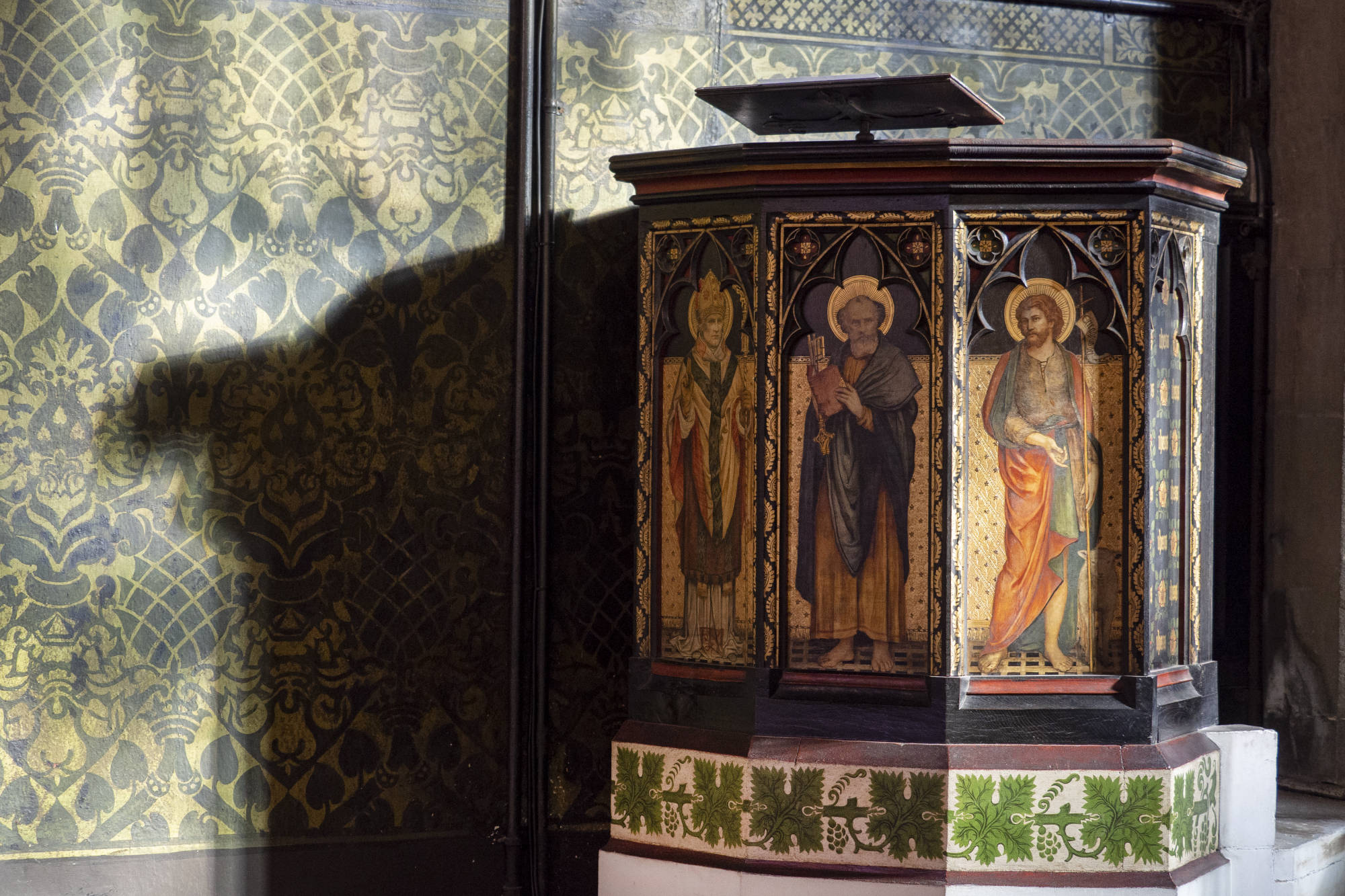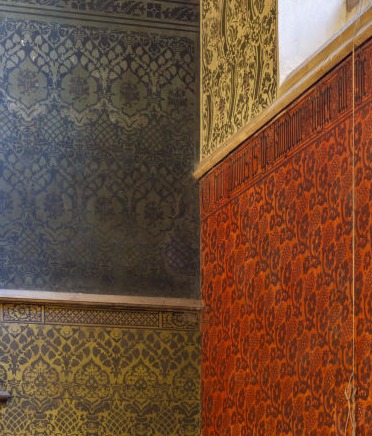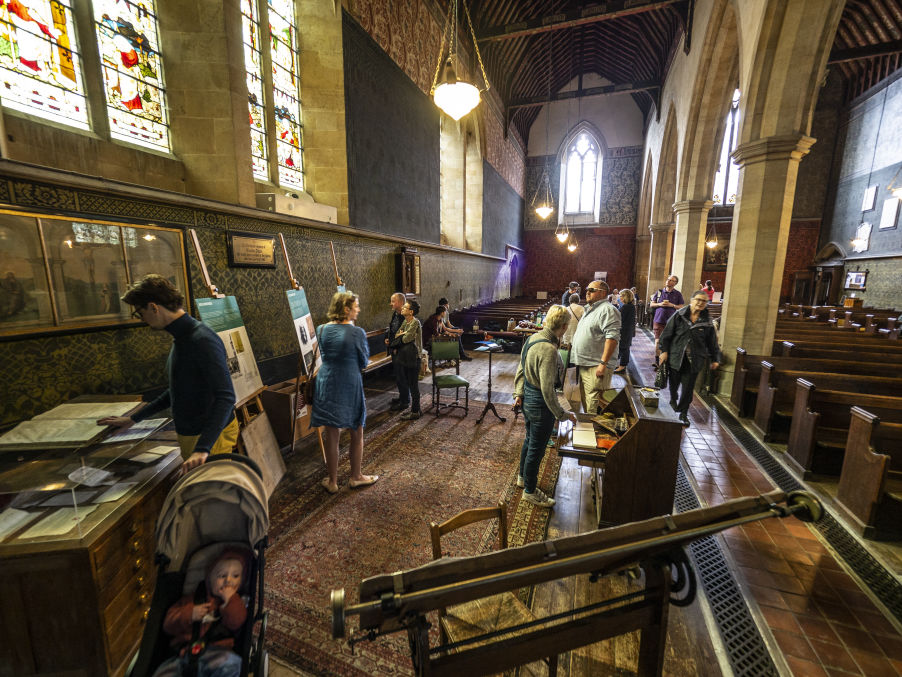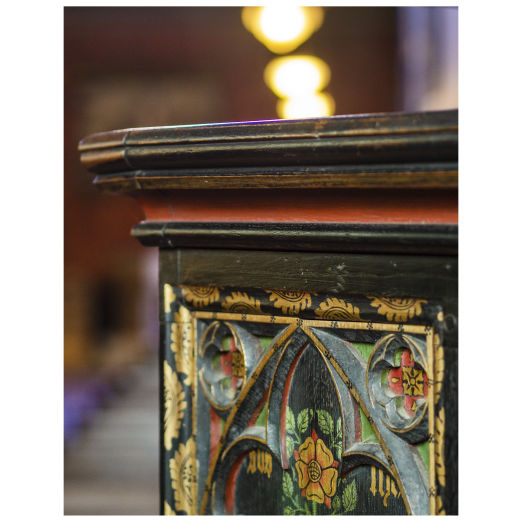

The parish of All Saints’ was once one of the largest and fastest growing in the city of Cambridge. Its medieval church, which once stood opposite Trinity and St John’s colleges, became too small for purpose and a new church was designed to replace it. The land was gifted by Jesus College and building work began in 1863 to the designs of George Frederick Bodley. The lofty spire made it for a short time the tallest building in the city. Sadly, regular services finished in 1973, the parish having reduced dramatically in size due to redevelopment of the King Street area, with the remaining dwellings nearby being used as student accommodation. The church was threatened with partial demolition which would have changed the city’s skyline forever. Thankfully, a small group of dedicated campaigners put paid to those plans and it was vested in The Churches Conservation Trust in 1981.


Today it is best known for its wealth of interior decoration which showcases the work of master decorator Frederick Leach of Cambridge and his firm of decorative artists. Step through the original swing doors and you’ll see almost every surface, including the exposed roof itself, is stencilled or hand-painted in greens, reds and golds with delicate flowers, foliage, fruits, birds, and Christian symbology intertwined with Biblical texts. Morning light pours through stained glass by William Morris, Edward Burne-Jones, Ford Madox Brown and Philip Webb, and throughout the day through windows by Charles Eamer Kempe, Douglas Strachan and Ward & Hughes. There is a filigree screen by the Cambridge firm of Rattee & Kett and an organ designed for the space by Forster & Andrews of Hull. Bold silk hangings surround the altar table, faded over time, but reflecting Bodley’s vision of a 14th century English gothic church.


When the church was taken on by the Churches Conservation Trust in 1981 they carried out restoration work and opened All Saints' to the public again. However, in recent years visitor numbers have declined, so the CCT approached The Arts Society Cambridge to help put All Saints’ back on the map. We are a small group of volunteers - Friends of The Painted Church - who are working to attract more visitors to All Saints’ Church with a range of events and activities throughout the year.
No visit to Cambridge is truly complete without a visit to the city’s most ornate non-collegiate church and although its former glory may have dimmed, it is now set to shine bright once more.

The text on this page, and all photos on the website, are by Adrian Powter, unless otherwise stated.
Follow us on social media